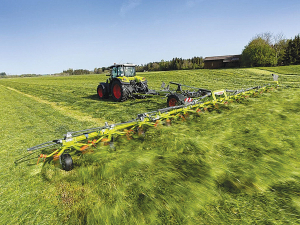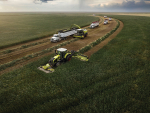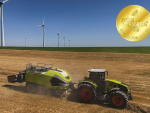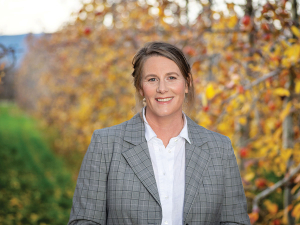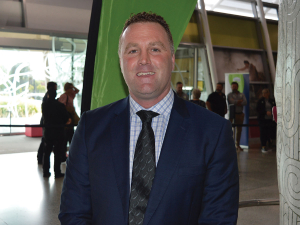Over the last two decades, the days of combi machines for spreading and raking grass have disappeared, with manufacturers and end users realising that dedicated machines lead to far better results.
Claas was one of the first to offer a harvesting system where mowers were matched with tedders, that in turn were followed by recommended swathers, to present the best possible row to the harvesting elements.
Produced at its Bad Saulgau facility, the latest Claas tedder range has been “topped off” with the Volto 1300 and 1500 models, each unit offered with the choice of non-steered or steered axles.
In the case of the 1500 model, which is equipped with fourteen rotors, each 1.5 metres diameter, the stresses placed on the machine chassis and sub-frames, in both sizes, have resulted in a completely re-engineered solution, alongside a new driveline.
The result is said to provide increased strength and durability, but also allows the machines to cope with the changing ground contours that are likely to be simultaneously encountered, both longitudinally and laterally, across the fully working width.
Clever geometry ensures the centre of gravity of the re-engineered frame remains close to the transport axle, ensuring maximum stability, particularly when lifting at the headlands. The steering axle option also comes into play on the headlands, allowing the rotors to stay in work and make the operation smoother.
Looking at the machine in more detail, the tedder rotors remain the company’s well known Max Spread units with arms angled at a very precise 29.3°.
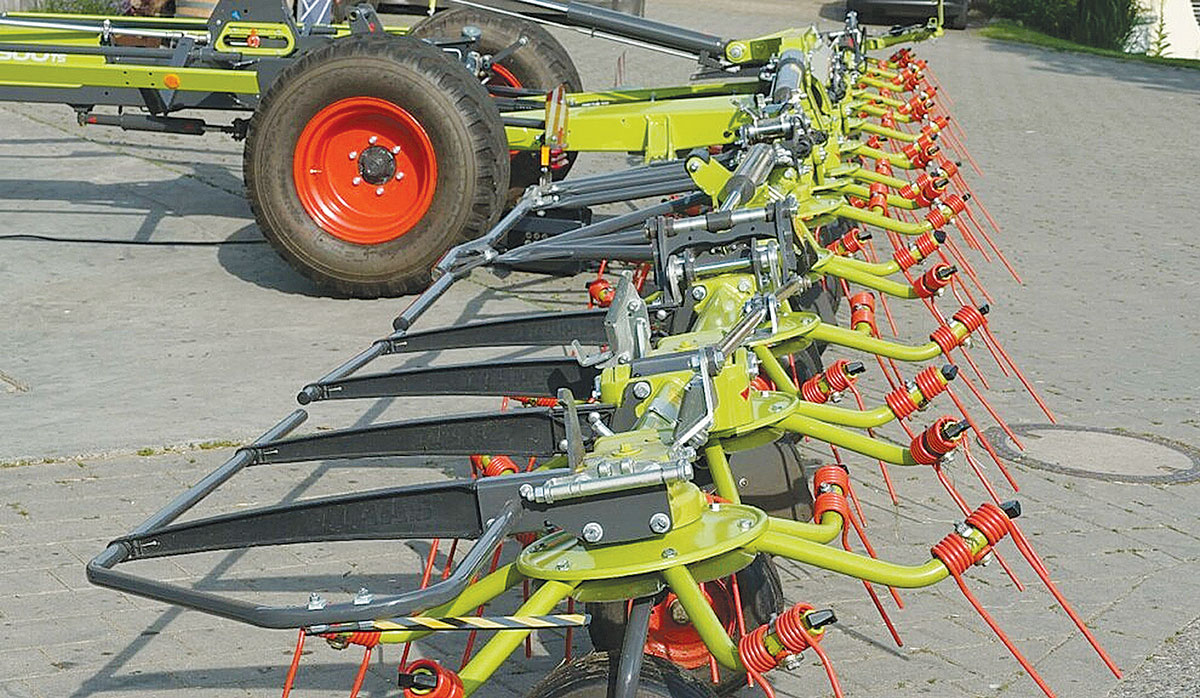 |
|---|
|
The 1500 model, which is equipped with fourteen rotors.
|
The overall machine rake angle is adjusted by a single crank handle situated at the front of the main chassis, with the inclusion a large position indicator for easy adjustment. The angle of engagement can be adjusted between 12-16˚. The rotor houses are now oil filled to increase longevity and reduce service intervals.
Looking at the driveline, the shaft speed has been increased by 50% to reduce the torque loadings, while the finger drives, connecting each part of the frame, have also been reinforced to allow 180° folding, even at full power.
Moving the tedder from work to transport is achieved using a single- acting lift ram, with a double-acting spool valve controlling the folding of the two arms and lowering into the carrying cradles. Overall transport width is kept below 3m with a folded height of 3.29m.
In the case of the 13m version, the machine is configured with 12 rotors, although the driveline remains the same as its larger brother, as does the choice between either 15/70-18 or 500/55-20 tyres for softer conditions.





